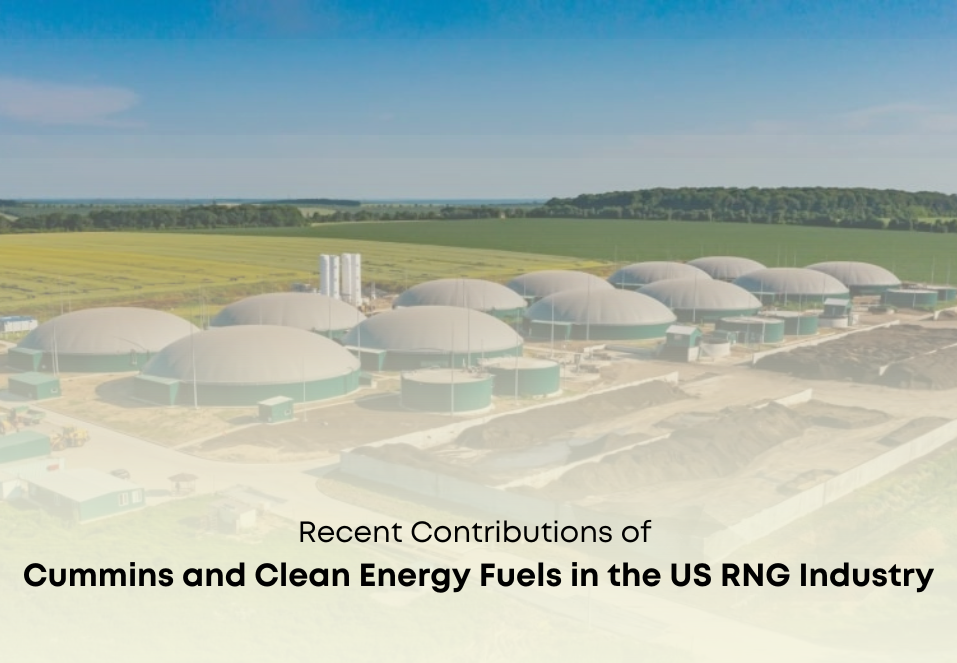The world is no longer unaware of the benefits of RNG (Renewable Natural Gas). Instead, several countries are taking proactive measures to increase RNG production and usage in the economy. Countries like the United States have seen exceptional increases in the adoption of RNG, especially in the transportation industry. This blog will explore some recent RNG updates in the States.
According to BloombergNEF’s Sustainable Energy Factbook, RNG very recently achieved a milestone by surpassing the use of conventional natural gas in vehicles. Other reports stated that renewable natural gas is also replacing CNG (Compressed Natural Gas) in vehicles that support CNG engines. The country further expects an increase in the use of RNG in vehicles.
Cummins, a global power technology leader, is all set to roll out the X15N engine after rigorous testing in 2023. X15N is the very first 15-liter natural gas engine ideal for long-haul applications and heavy-duty trucks. According to the company, its natural gas engine is similar to diesel engines and can function on renewable natural gas, opening a new fuel market.
Mr. Patrick Serfass, the executive director of the American Biogas Council, said, “All of a sudden, there’s this new segment of vehicles that have not been converted to RNG. If they suddenly start flipping all their tractors over to CNG, that creates a big market opportunity.”
Landfill operators and businesses dealing with RNG or biogas can benefit exceptionally from the increase in demand for renewable natural gas/biogas. According to BloombergNEF, RNG’s production capacity in the states increased by 13% in 2023. The gas output is dominated by landfill facilities and followed by digesters that process food waste, manure, and wastewater.
Another update comes from Clean Energy Fuels, a California-based company. In March 2024, the company opened two Midwestern RNG facilities—one in South Dakota and another in Iowa. The senior vice president of Clean Energy Fuels, while announcing the Iowa facility, said, “With the introduction of Cummin’s 15-liter natural gas engine—X15N, the company is expecting an increase in demand for renewable natural gas this year.”
The Iowa facility set up at State Center’s Marshall Ridge Dairy costs USD 42 million. It has three digesters that produce 1.7 million gallons of renewable natural gas annually. The South Dakota facility set up at Viborg’s Tri-Cross Dairy costs about USD 34 million. This facility generates around 1 million gallons of renewable natural gas annually.
The company plans to apply for state and federal environmental credits at every facility established in collaboration with Dynamic Renewables.
Overall, the renewable natural gas industry in the United States continues to grow across sectors. Big corporations and governments will continue introducing new policies and plans to establish RNG facilities in the States.





Comments